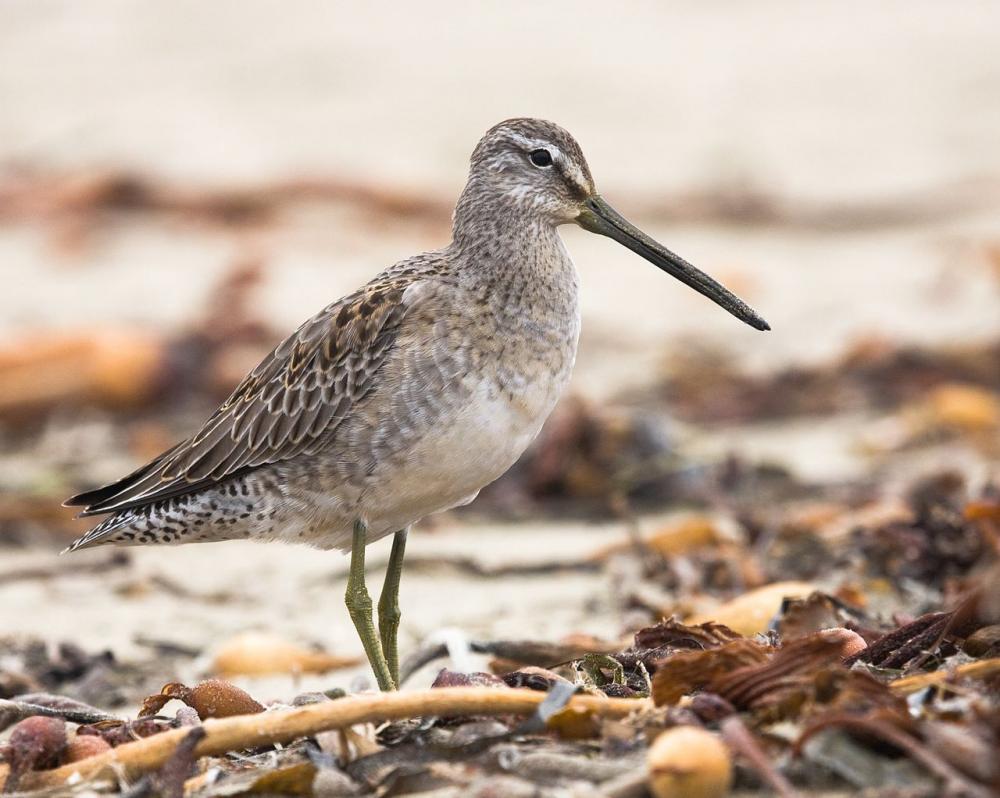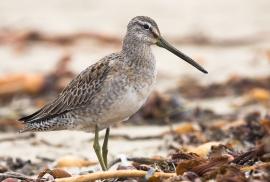Guide to Boreal Birds
Overview
Dowitchers are most often seen during migration. This species favors freshwater habitats, while the Short-billed Dowitcher is more partial to salt water. The main fall migration of Long-bills takes place in September and October, when most of the Short-bills have already departed.
Description
12" (30 cm). A snipe-like, long-billed shorebird with white lower back and rump, black and white checkered tail, dark bill, green legs. Summer adults have reddish underparts (including belly), with barring on breast, sides, and flanks, and reddish edges on feathers of upperparts. Winter birds gray overall, with pale eyebrow and white lower back and rump. See Short-billed Dowitcher.
Voice
A high sharp keek, quite unlike call of Short-billed Dowitcher.
Nesting
4 olive eggs, spotted with brown, in a grass and moss-lined nest on the ground.
Habitat
Breeds in muskeg; found on mudflats, marshy pools, and margins of freshwater ponds during migration and in winter.
Range/Migration
Breeds in western Alaska and extreme northwestern Mackenzie. Winters mainly along coasts from Washington and Virginia southward.



